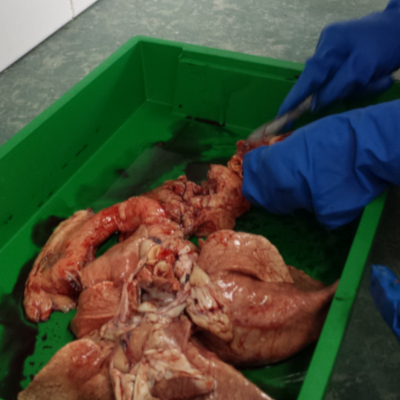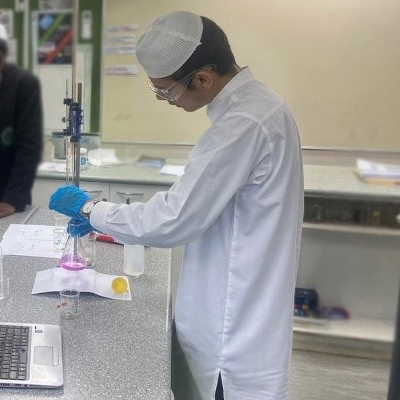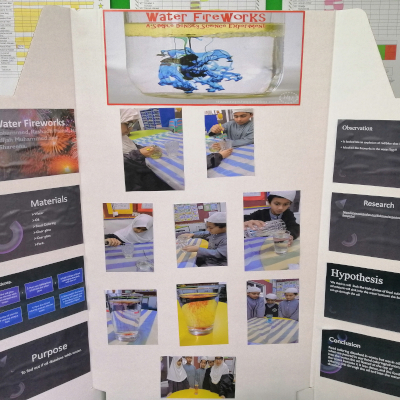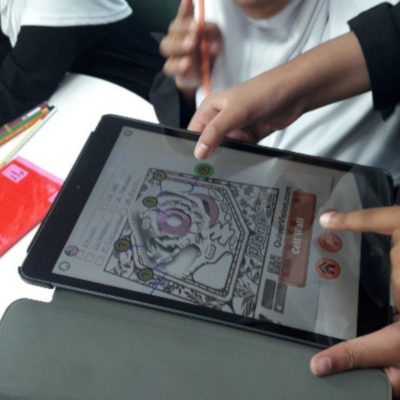Science

Science is a way of investigating, understanding, and explaining our natural, physical world and the wider universe. It involves generating and testing ideas, gathering evidence – including by making observations, carrying out investigations and modelling, and communicating and debating with others – in order to develop scientific knowledge, understanding, and explanations.
By studying science, students:
- develop an understanding of the world, built on current scientific theories
- learn that science involves particular processes and ways of developing and organising knowledge and that these continue to evolve
- use their current scientific knowledge and skills for problem solving and developing further knowledge
- use scientific knowledge and skills to make informed decisions about the communication, application, and implications of science as these relate to their own lives and cultures and to the sustainability of the environment.
The nature of science strand is the overarching, unifying strand. Through it, students learn what science is and how scientists work. They develop the skills, attitudes, and values to build a foundation for understanding the world.
Scicene Student’s Activities
Primary
An integrated learning programme will be the approach with term themes providing a context that has meaning for students.
All learning strands will be integrated and will provide a learning framework for science and in each year students will have learning experiences that draw from some or all learning strands. Learning and teaching programmes will be planned to meet the needs of all learners.
Students will:
- Investigate the Nature of Science, Living World, Planet Earth and Beyond, Physical world, and Material World, in logical and structured ways.
- Characteristics of learning and teaching in Science will be followed. This includes those of developing ways of investigating, understanding, and explain our natural, physical world and the wider universe. Skills include generating and testing ideas, gathering evidence –including making observations, investigating, and modelling, and communicating and debating.
- This will happen through An integrated approach to learning and focusing on contexts that have meaning for students. Maori and Islamiyat perspective will be included in planning.
- Wherever possible science will be integrated into special events happening in the school community.
Nature of Science where students are taught to: Understand Science, Investigating in Science, Communicating in Science, Participating and Contributing
The Living world where the students learn about: Life Processes , Ecology, Evolution
Planet Earth and beyond where students learn about: Earth Systems, Interacting Systems, Astronomical Systems
Physical world where students learn about: Physical inquiry and Physics Concepts
Material world where students learn about: Properties and changes of matter
Intermediate
Years 7 to 8
Years 7 to 10 have a general Science course based on the Nature of science strand. The other four contextual strands covered are: material world, physical world, living world and Planet Earth and beyond.
Living World
Recognise that there are life processes common to all living things and that these occur in different ways. Explore how the groups of living things we have in the world have changed over long periods of time and appreciate that some living things in New Zealand are quite different from living things in other areas of the world.
Planet Earth and beyond
- Appreciate that water, air, rocks and soil, and life forms make up our planet and recognise that these are also Earth’s resources. Investigate the water cycle and its effect on climate, landforms, and life.
- Investigate the components of the solar system, developing an appreciation of the distances between them.
Physical world
- Explore, describe, and represent patterns and trends for everyday examples of physical phenomena, such as movement, forces, electricity and magnetism, light, sound, waves, and heat. For example, identify and describe the effect of forces (contact and non-contact) on the motion of objects; identify and describe everyday examples of sources of energy, forms of energy, and energy transformations.
Material world
- Group materials in different ways, based on the observations and measurements of the characteristic chemical and physical properties of a range of different materials.
- Compare chemical and physical changes.
- Relate the observed, characteristic chemical and physical properties of a range of different materials to technological uses and natural processes.
Years 9 to 10
Living world
- Recognise that there are life processes common to all living things and that these occur in different ways. Explain how living things are suited to their particular habitat and how they respond to environmental changes, both natural and human-induced. Begin to group plants, animals, and other living things into science-based classifications.
Explore how the groups of living things we have in the world have changed over long periods of time and appreciate that some living things in New Zealand are quite different from living things in other areas of the world.
Planet Earth and beyond
Develop an understanding that water, air, rocks and soil, and life forms make up our planet and recognise that these are also Earth’s resources. Investigate the water cycle and its effect on climate, landforms, and life. Investigate the components of the solar system, developing an appreciation of the distances between them.
Physical world
Explore, describe, and represent patterns and trends for everyday examples of physical phenomena, such as movement, forces, electricity and magnetism, light, sound, waves, and heat. For example, identify and describe the effect of forces (contact and non-contact) on the motion of objects; identify and describe everyday examples of sources of energy, forms of energy, and energy transformations.
Material world
Group materials in different ways, based on the observations and measurements of the characteristic chemical and physical properties of a range of different materials.
Compare chemical and physical changes. Begin to develop an understanding of the particle nature of matter and use this to explain observed changes.
Relate the observed, characteristic chemical and physical properties of a range of different materials to technological uses and natural processes.
https://nzcurriculum.tki.org.nz/The-New-Zealand-Curriculum/Science/Learning-area-structure
Senior
NCEA level 1
All students take Science in year 11. This course has a blend of internal and external standards from all the four strands.
Nature of science is about:
Understanding about science
- Understand that scientists have an obligation to connect their new ideas to current and historical scientific knowledge and to present their findings for peer review and debate.
Investigating in science
- Develop and carry out investigations that extend their science knowledge, including developing their understanding of the relationship between investigations and scientific theories and models.
Communicating in science
- Use accepted science knowledge, vocabulary, symbols, and conventions when evaluating accounts of the natural world and consider the wider implications of the methods of communication and/or representation employed.
Participating and contributing
- Use relevant information to develop a coherent understanding of socio-scientific issues that concern them, to identify possible responses at both personal and societal levels.
NCEA level 2
Biology
Biology is offered to students who have reached a suitable level of Science in Year 11.
Year 12 Biology covers the following:
Life processes- Explore the diverse ways in which animals and plants carry out the life processes.
Ecology-Explore ecological distribution patterns and explain possible causes for these patterns.
Evolution-Understand that DNA and the environment interact in gene expression.
Ecology and evolution-Explain how the interaction between ecological factors and natural selection leads to genetic changes within populations.
Chemistry
Chemistry is offered to students who have reached a suitable level of Science in Year 11.
Year 12 Chemistry covers the following:
Properties and changes of matter
- Identify patterns and trends in the properties of a range of groups of substances, for example, acids and bases, metals, metal compounds, and hydrocarbons.
- Explore factors that affect chemical processes.
The structure of matter
- Distinguish between atoms, molecules, and ions (includes covalent and ionic bonding).
- Link atomic structure to the organisation of the periodic table.
- Use particle theory to explain factors that affect chemical processes.
Chemistry and society
- Investigate how chemical knowledge is used in a technological application of chemistry.
Physics
Physics is offered to students who have reached a suitable level of Science in Year 11.
Year 12 Physics covers the following:
Physical inquiry and physics concepts
- Investigate physical phenomena (in the areas of mechanics, electricity, electromagnetism, light and waves, and atomic and nuclear physics) and produce qualitative and quantitative explanations for a variety of unfamiliar situations.
- Analyse data to deduce complex trends and relationships in physical phenomena.
Using physics
Use physics ideas to explain a technological or biological application of physics
NCEA level 3
Biology
Biology is offered to students who have reached a suitable level of Biology in year 12.
Year 13 Biology covers the following:
Life processes, ecology, and evolution
- Understand the relationship between organisms and their environment.
- Explore the evolutionary processes that have resulted in the diversity of life on Earth and appreciate the place and impact of humans within these processes.
- Understand how humans manipulate the transfer of genetic information from one generation to the next and make informed judgments about the social, ethical, and biological implications relating to this manipulation.
Chemistry
Chemistry is offered to students who have reached a suitable level of Chemistry in year 12.
Year 13 Chemistry covers the following:
Properties and changes of matter
- Investigate and measure the chemical and physical properties of a range of groups of substances, for example, acids and bases, oxidants and reductants, and selected organic and inorganic compounds.
The structure of matter
- Relate properties of matter to structure and bonding.
- Develop an understanding of and use the fundamental concepts of chemistry (for example, equilibrium and thermochemical principles) to interpret observations.
Chemistry and society
- Apply knowledge of chemistry to explain aspects of the natural world and how chemistry is used in society to meet needs, resolve issues, and develop new technologies.
Physics
Physics is offered to students who have reached a suitable level of Physics in year 12.
Year 13 Physics covers the following:
Physical inquiry and physics concepts
- Investigate physical phenomena (in the areas of mechanics, electricity, electromagnetism, light and waves, and atomic and nuclear physics) and produce qualitative and quantitative explanations for a variety of complex situations.
- Analyse and evaluate data to deduce complex trends and relationships in physical phenomena.
Using physics
- Use physics ideas to explain a technological, biological, or astronomical application of physics and discuss related issues.




